
Lean manufacturing is a production methodology that aims to eliminate waste activities, optimize productivity, and reduce time to market. By implementing Lean principles, companies can sustainably deliver value to their customers. This article will explore the top 10 Lean tools companies can use to improve and maximize operational efficiency continuously.
1. 5S
5S is a Lean workspace optimization method consisting of five consecutive steps: Sort, Straighten, Shine, Standardize, and Sustain. This tool is applicable in both manufacturing and knowledge work environments.
By implementing 5S, teams can separate necessary tools from unnecessary ones, minimize waste activities, keep equipment in optimal condition, standardize work processes, and sustain continuous improvement.
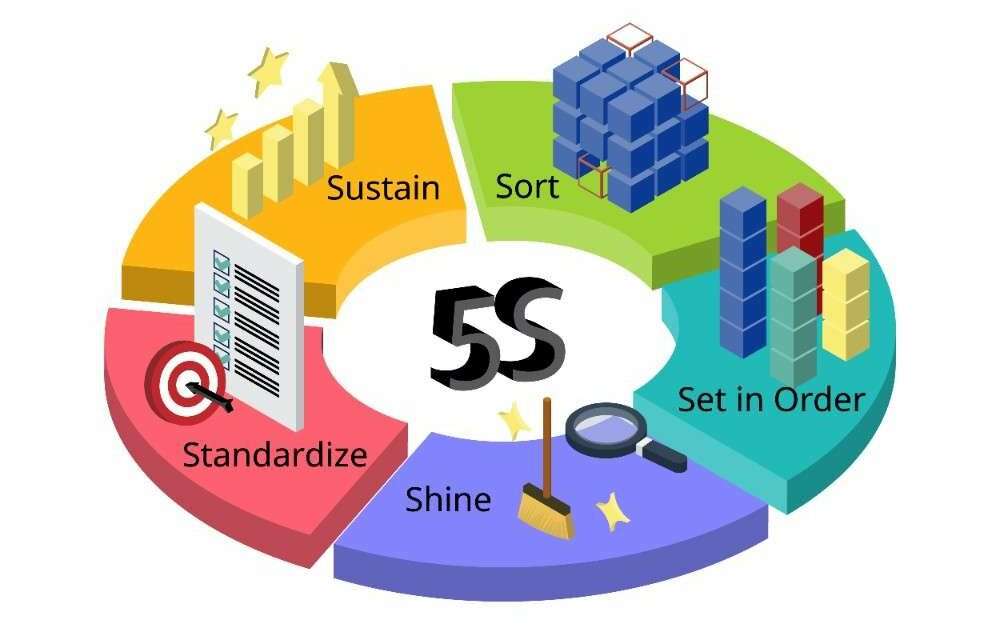
However, challenges may arise during the implementation of 5S, including resistance to change, lack of team commitment, resistance to redefining “normal,” and lack of management support.
Examples Of 5S
- Manufacturing: Applying 5S in the production environment improves the efficiency of work processes by removing unnecessary tools and parts from the work area.
2. Andon
Andon is a visual signaling system used in Lean manufacturing to alert workers and supervisors of abnormalities or issues in the production process. It helps facilitate quick response and resolution of problems, ensuring that production remains on track.
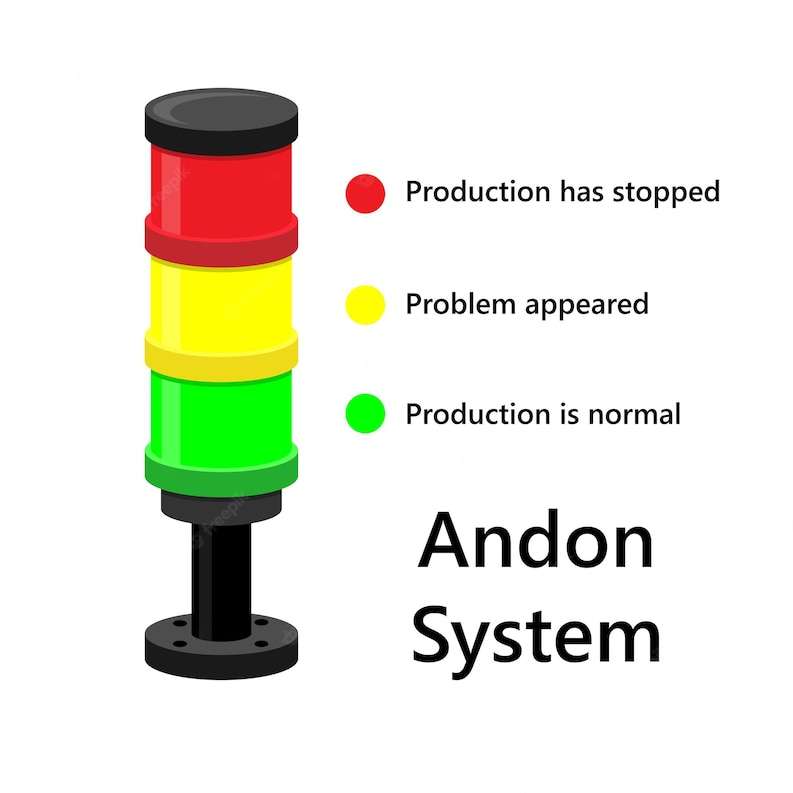
Andon systems can be physical or digital and often use visual and auditory cues to communicate the status of the production line. By implementing Andon, organizations can improve communication, increase productivity, and reduce waste caused by production issues.
Examples Of Andon
- Automotive Industry: Assembly lines in automotive manufacturing often use Andon systems to signal any issues or quality concerns in real-time, allowing for immediate resolution.
3. Just-In-Time
Just-In-Time (JIT) is a Lean tool that focuses on delivering the correct quantity of products or services at the right time, minimizing waste and inventory holding costs.

It involves synchronizing production with customer demand, reducing lead times, and maintaining flexibility to respond to changes in demand.
JIT relies on effective supply chain management, continuous improvement, and close supplier collaboration. By implementing JIT, organizations can improve efficiency, reduce inventory waste, and enhance customer satisfaction.
Examples Of Just-In-Time
- E-commerce: Online retailers can use JIT principles to optimize their inventory management and order fulfillment processes, ensuring timely delivery and minimizing inventory holding costs.
4. Heijunka
Heijunka, or production leveling, is a Lean tool that balances production across different products or services to meet customer demand while minimizing waste.
It involves smoothing out production volumes and sequencing orders to achieve a consistent and efficient workflow.
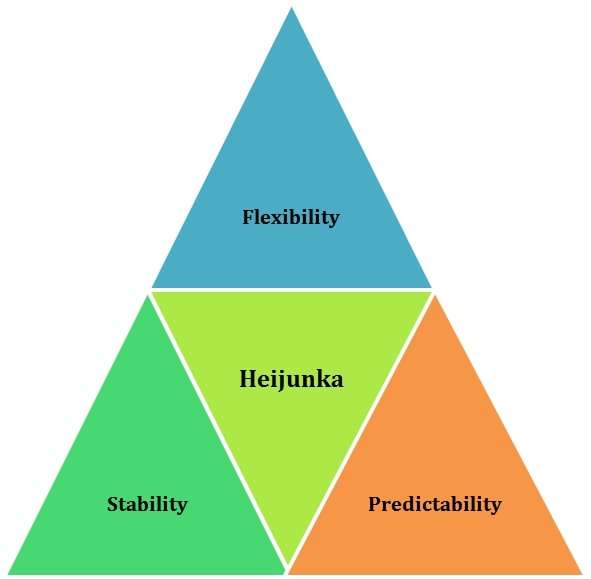
By implementing Heijunka, organizations can reduce overproduction, optimize inventory levels, and improve overall operational efficiency.
Examples Of Heijunka
- Automotive Manufacturing: Car manufacturers can use Heijunka to level production across different models and variants, ensuring a steady flow of production and minimizing inventory waste.
5. Value Stream Mapping
Value Stream Mapping (VSM) is a tool used by Lean managers to identify the flow of value in a company’s processes. It involves mapping the workflow, including all the actions and people involved in creating and delivering the final product or service.
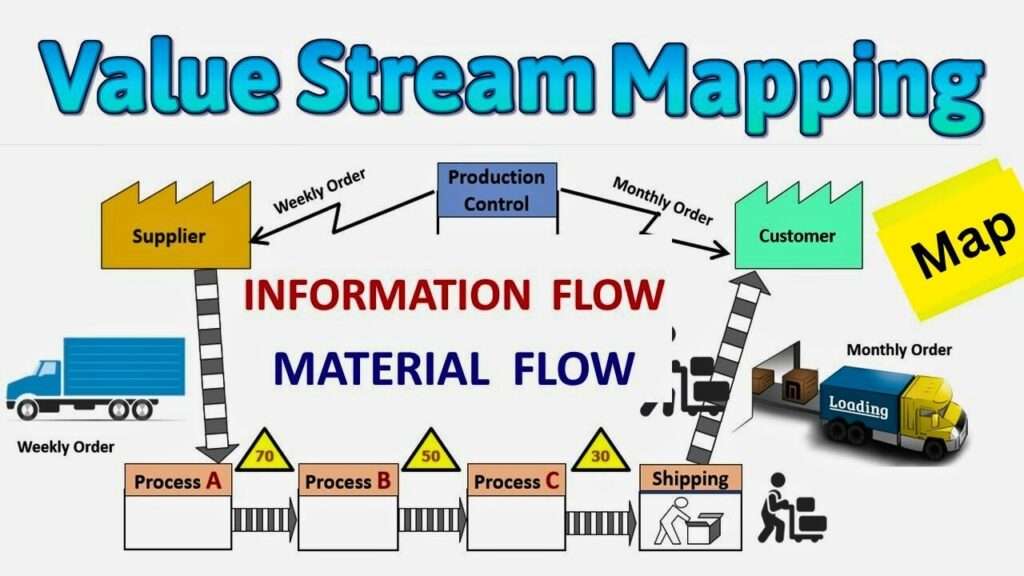
VSM helps identify waste, improve processes, and increase efficiency. By visualizing the value stream, organizations can gain insights into their operations and make informed decisions for improvement.
Examples of Value Stream Mapping
- Organizations can use VSM to map out their manufacturing processes, identify bottlenecks, and optimize the flow of value.
- Service-based companies can use VSM to analyze their customer service processes and identify opportunities for improvement.
6. Kanban
Kanban is a Lean method that originated as a scheduling system for Lean manufacturing and workflow management. The word “kanban” translates to “visual board” or “sign” in Japanese, which reflects the main features of this tool – visual boards and Kanban cards.
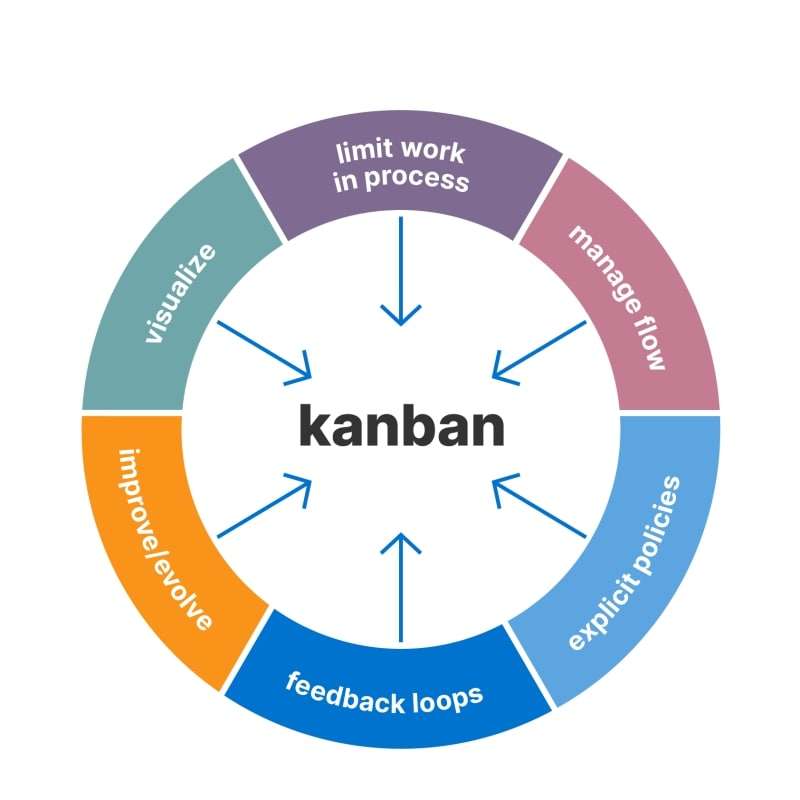
Kanban allows teams to optimize workflows, improve productivity, and reduce waste activities. Some of the benefits of using Kanban include:
- Better visibility of flow
- Increased productivity
- reduced waste activities
- Improved collaboration
- Increased customer satisfaction
However, adopting Kanban can be challenging due to organizational resistance to change, inconsistent processes and practices, team resistance, and lack of management support and collaboration.
Examples Of Kanban
- Software Development: Kanban boards help software development teams organize and prioritize their work, reducing wasteful activities and optimizing delivery.
- Manufacturing: Kanban software enables manufacturing organizations to track the work of suppliers or subsidiaries, enhancing coordination between different subunits.
- Telecommunications: Support and communications teams can prioritize work and track support tickets using Kanban, improving time-management control over customer inquiries.
7. Continuous Flow
Continuous Flow is a Lean tool that establishes a smooth and uninterrupted workflow. It aims to eliminate disruptions, bottlenecks, and delays in the production process.
Organizations can reduce lead times, improve efficiency, and increase customer satisfaction by optimizing workflow.
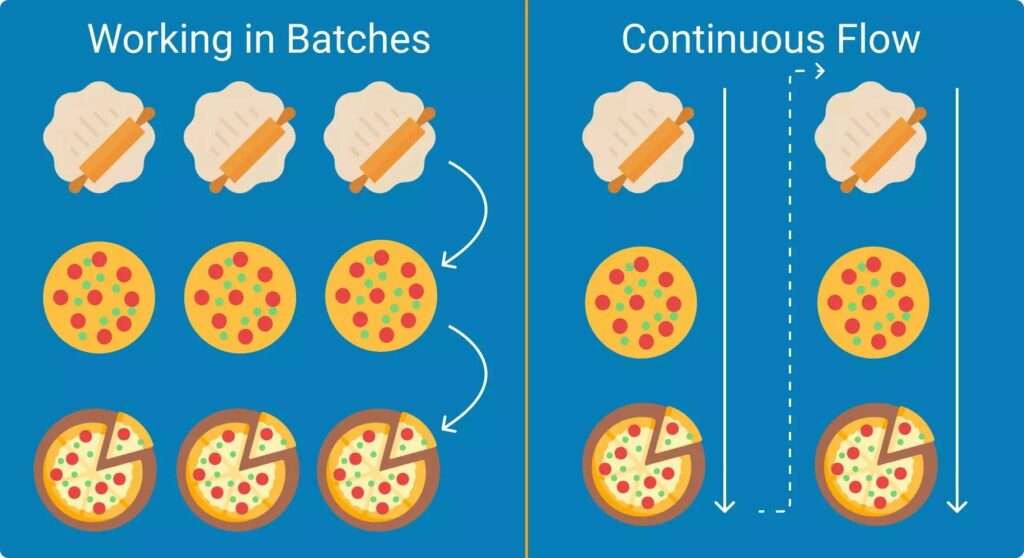
Continuous Flow is often achieved through implementing standardized work processes and visual management systems and eliminating non-value-added activities.
Examples of Continuous Flow
- Food Industry: Restaurants can use Continuous Flow principles to optimize kitchen processes, ensuring a smooth and efficient flow of orders from preparation to delivery.
8. Gemba Walk
Gemba Walk is a Lean tool that involves physically going to where work is happening to observe, engage, and understand the process.

It allows managers and leaders to gain firsthand knowledge about the work being done, identify opportunities for improvement, and engage with employees to promote a culture of continuous improvement.
By actively participating in the Gemba Walk, organizations can bridge the gap between management and frontline employees, fostering collaboration and innovation.
Examples Of Gemba Walk
- Manufacturing: Managers can visit the production floor to observe the production process, identify inefficiencies, and engage with employees to gather insights and ideas for improvement.
- Healthcare: Hospital administrators can conduct Gemba Walks in different departments to understand the challenges faced by healthcare professionals and identify areas for process improvement.
9. Kaizen
Kaizen, which means “continuous improvement” in Japanese, is at the core of Lean Management. This tool involves identifying problem areas, observing and analyzing current methods, testing and validating improvement tactics, implementing improvements, and analyzing results for feedback.
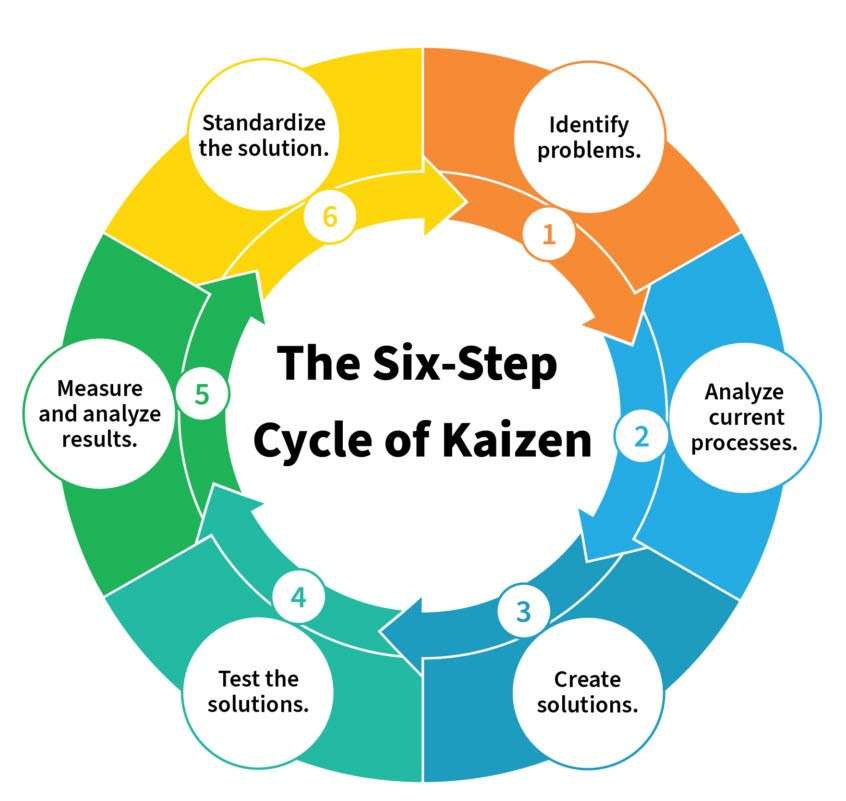
Kaizen can be applied to any department within an organization and helps foster a culture of continuous improvement. Organizations can capture and fulfill the best ideas by empowering employees with decision-making autonomy and encouraging a learning mentality.
Examples Of Kaizen
- All organizational departments can benefit from Kaizen by identifying problem areas and implementing continuous improvement initiatives.
10. Hoshin Kanri
Hoshin Kanri is a strategic planning and deployment tool used in Lean management to align organizational goals with actions and initiatives.
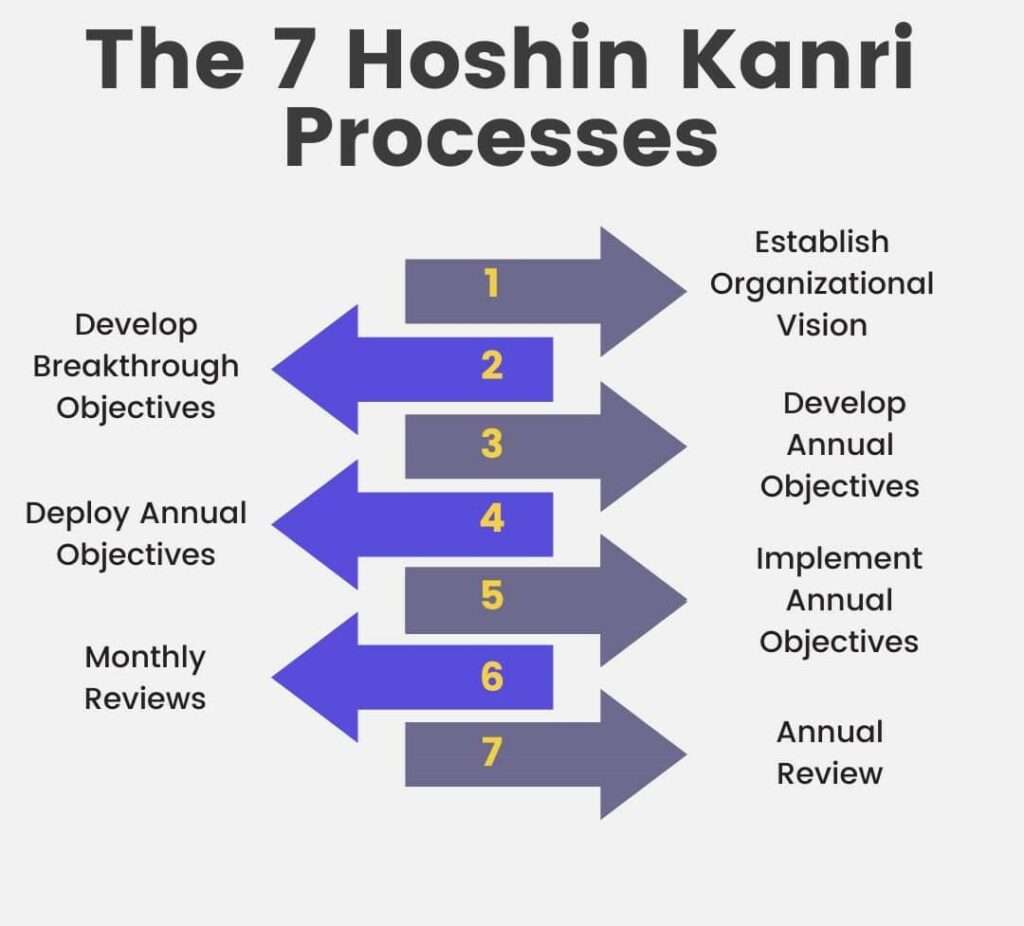
It involves creating a strategic plan, cascading goals and objectives throughout the organization, and using a feedback loop to monitor progress and make adjustments.
Hoshin Kanri promotes cross-functional collaboration, accountability, and alignment toward a shared vision. By implementing Hoshin Kanri, organizations can improve focus, coordination, and the achievement of strategic objectives.
Examples Of Hoshin Kanri
- Retail Industry: Retailers can use Hoshin Kanri to align their business strategies, goals, and initiatives across different departments and store locations.
Conclusion
Lean tools provide organizations with a systematic approach to continuously improve and maximize operational efficiency. By implementing tools such as Kanban, 5S, Kaizen, and Value Stream Mapping, companies can eliminate waste, optimize workflows, and deliver value to their customers.
However, adopting Lean tools requires commitment and a culture of continuous improvement, but the benefits are well worth the effort. So, embrace Lean principles and use these 10 Lean tools to drive your organization towards success.
Read more: The Importance Of A 5s Organized Workspace

